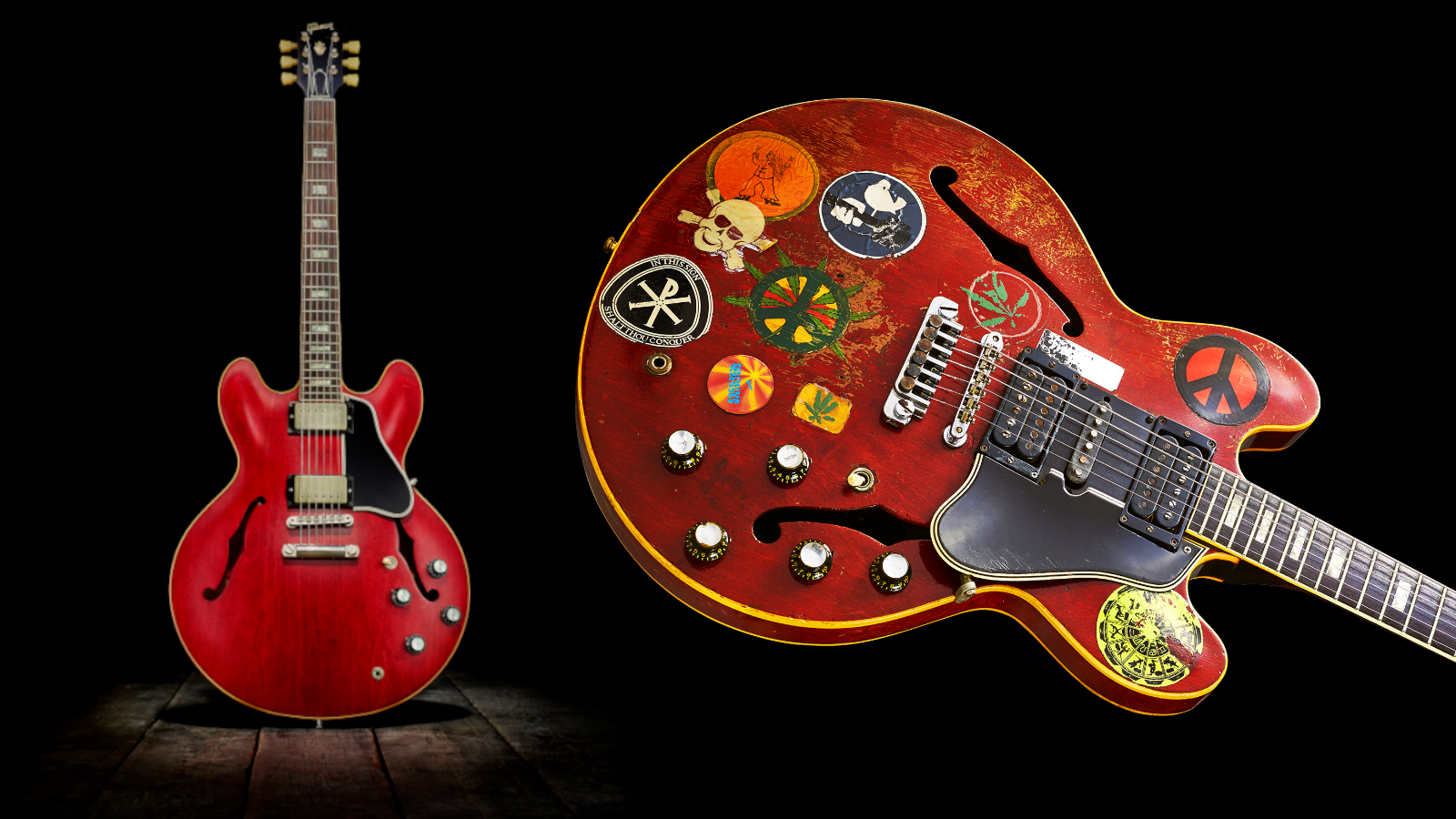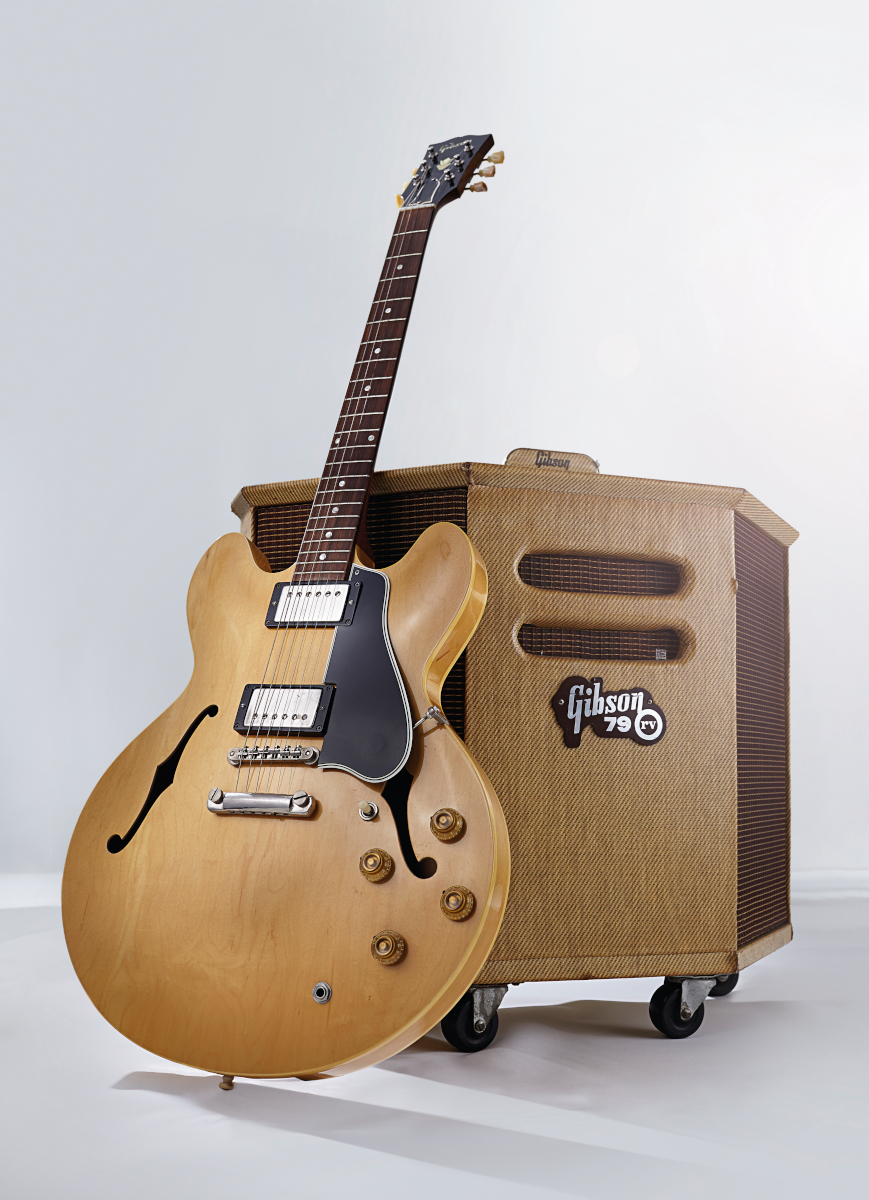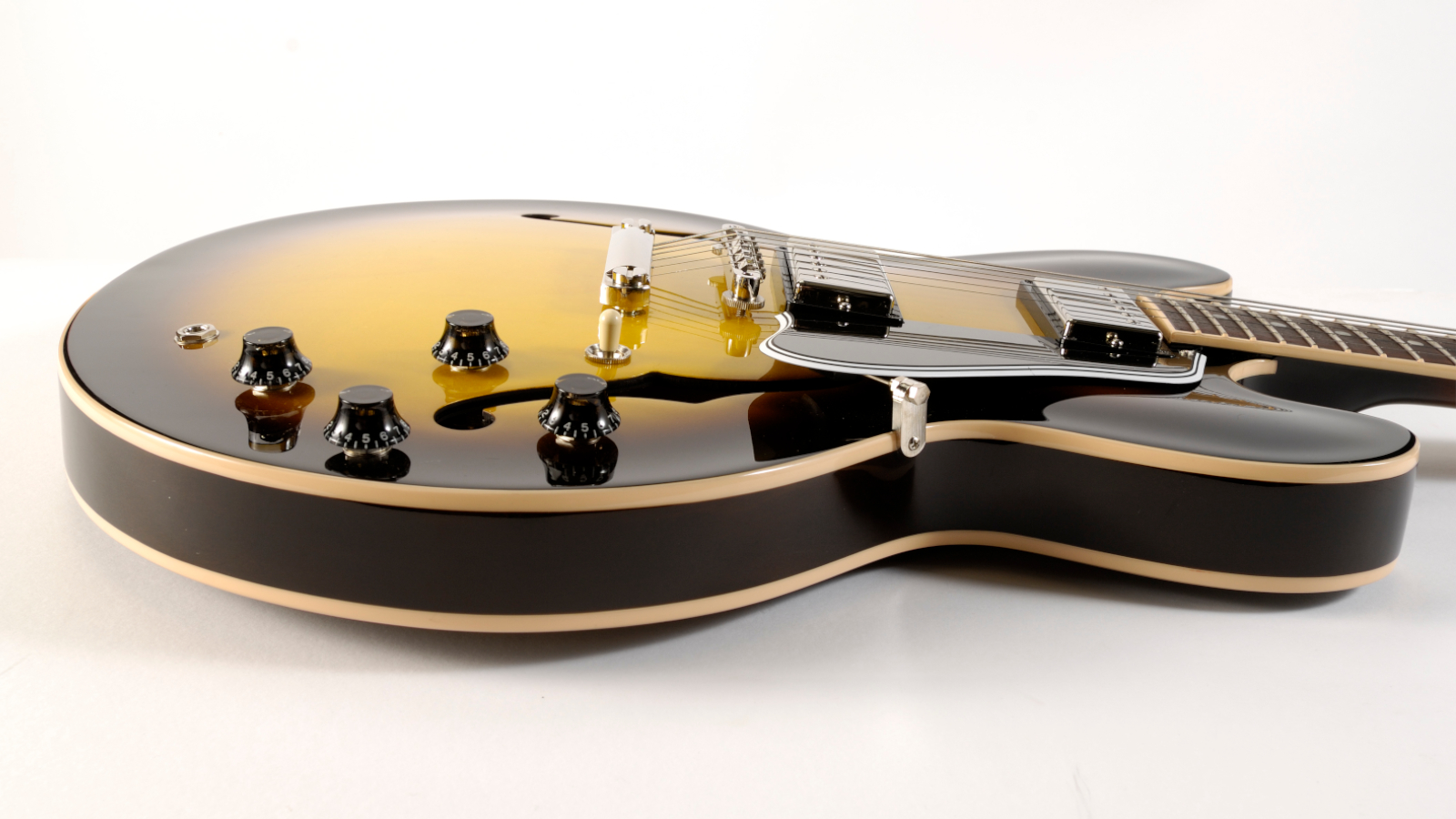The History of the Gibson ES-335TD
This iconic semi-hollow thinline presented the best of both the solidbody and acoustic worlds

In 1958, with jazz and the blues fully amped up, Gibson debuted the ES-335TD as the original ‘Thinline’ ‘Double-pickup’, double-cutaway, semi-hollow archtop.
It was a logical conclusion to the rich history of Gibson’s ‘ES’ (Electric Spanish) lineage that began in 1936 with the Charlie Christian-endorsed ES-150.
Over the next couple of decades, Gibson worked towards something of an apex with the ES-335TD via a series of profound design concepts.
In 1949, the ES-175 was introduced with a single cutaway, gaining double pickups in 1953 as the ES-175D.
In 1954, the Byrdland (an amalgamation of the names Billy Byrd and Hank Garland), which was in its early incarnation documented as the L-5 Special Thin Model, profiled a reduced body depth.
This was shortly followed by the ES-350T in 1955 (later renamed ES-350TD), which also featured a reduced body depth, cutaway and double pickups.
As an addition to a well-established line of f-hole archtops, the ES-335TD broke further ground with its double cutaway and semi-acoustic/center-block features, augmented by Gibson’s new and improved noise-cancelling PAF humbucker pickups.
Get The Pick Newsletter
All the latest guitar news, interviews, lessons, reviews, deals and more, direct to your inbox!

Along with increased access to the upper frets enabling guitarists to easily hit notes and bend strings high up the neck, its solid maple center-block snugly housed and surrounded both pickups, firmly suppressing the feedback that had plagued archtop players for years.
The ES-335TD thus employed the solidbody signature feature of recessing pickups into a small cavity (a tried and tested method since Gibson released the Les Paul in 1952), while enjoying some of the natural acoustic resonance of a traditional archtop.
Part solidbody/part acoustic, the innovative ‘semi-acoustic’ hybrid guitar successfully balanced the best of both worlds.
The original ES-335 (released in 1958 as the ES-335T) sported a one-piece glued mahogany neck with a Brazilian rosewood ’board and dot inlays, joining the body at the 19th fret. The body measured 16 inches across and consisted of an arched, single-bound laminated maple top and back.
It was mounted with a Tune-o-matic bridge and stop tailpiece (Bigsby optional) and finished in either Sunburst or Natural (ES-335TDN). The iconic Cherry finish (ES-335TDC) was offered later in 1959.

1957 ES-335TD developed
1958 Launched as ES-335T; production begins in spring
1959 Iconic Cherry finish available in addition to Sunburst and Natural
1960 Neck profile becomes less chunky; thinner/flatter ‘blade’ necks appear
1961 Shorter pickguard transition complete (stops below bridge)
1962 Pearloid blocks replace dot inlays
1964 Transition towards trapeze tailpiece (stop tailpieces becoming less common)
1965 Nickel-plated hardware replaced by chrome-plated hardware; nut decreases in width
1966 Brazilian rosewood fretboard replaced by Indian rosewood
Some design adjustments were subsequently made throughout its production, although it hasn’t altered radically since its introduction, with reissues catering for notable preferences in specification, without needing to invest in the highly collectible original vintage models. (Interestingly, the ES-335 is worth considerably more on the vintage market than equivalent-year ES-345s and ES-355s, although both of these models were pricier than the ES-335 upon original release.)
Along with the ES-335’s ability to push the envelope in terms of gain and a warm, plangent fullness of tone, it struck a very happy medium between feedback and sustain, endowing players with a flexible and colorful palette of sounds at their fingertips.
It was famously embraced by blues players and as a particularly dynamic instrument has also enjoyed popularity within a diverse range of guitar styles since its arrival, with ES-335 signature models having been produced by Gibson in association with artists as diverse as Trini Lopez, Eric Clapton, Larry Carlton, Chris Cornell, Lee Ritenour, Roy Orbison, Tom DeLonge, Alvin Lee (“Big Red” ES-335), Andy Summers (1960 ES-335) and Dave Grohl (DG-335).
With an expressive, vocal characteristic, the ES-335’s continued popularity and longevity since its introduction in 1958 speaks in volumes.
Rod Brakes is a music journalist with an expertise in guitars. Having spent many years at the coalface as a guitar dealer and tech, Rod's more recent work as a writer covering artists, industry pros and gear includes contributions for leading publications and websites such as Guitarist, Total Guitar, Guitar World, Guitar Player and MusicRadar in addition to specialist music books, blogs and social media. He is also a lifelong musician.
Guitar Center's Guitar-A-Thon is back, and it includes a colossal $600 off a Gibson Les Paul, $180 off a Fender Strat, and a slew of new exclusive models
"We tried every guitar for weeks, and nothing would fit. And then, one day, we pulled this out." Mike Campbell on his "Red Dog" Telecaster, the guitar behind Tom Petty & the Heartbreakers' "Refugee" and the focus of two new Fender tribute models











